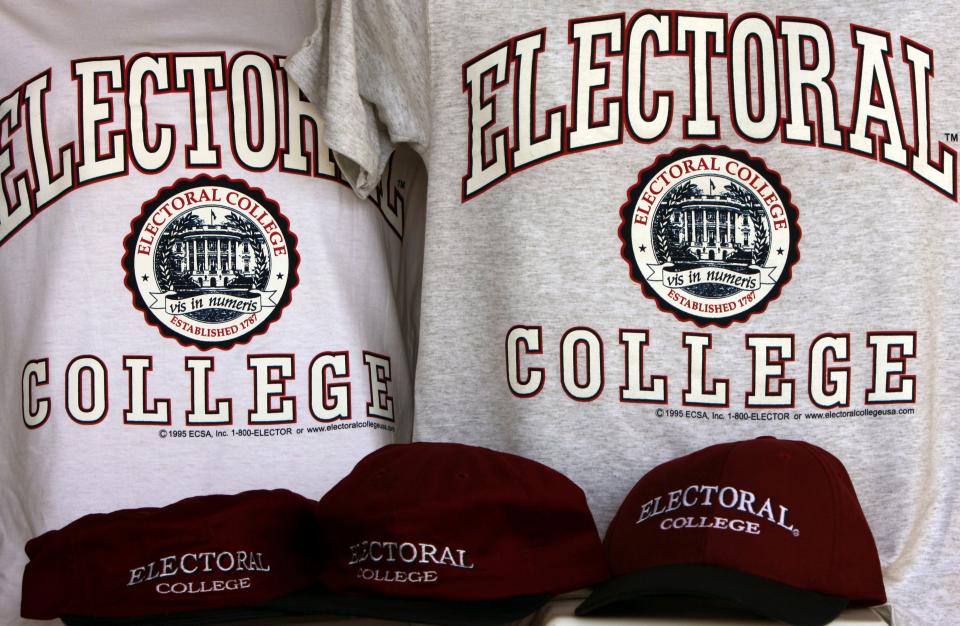The Electoral College isn't set in stone. Texas, Wisconsin could be next to switch sides.
Thanks to polls that show former Vice President Joe Biden beating President Donald Trump in Texas, Democrats are hoping that a long-gestating theory finally comes true — that they will gain the upper hand in the largest Republican state and grab its 38 electoral votes.
Whether or not the Democrats have a real chance of pulling this off, the discussion points to an often overlooked reality of modern presidential politics: Even the safest states for one party or the other can be dislodged and completely switch sides.
We’ve seen this repeatedly in the past 30 years of American politics. California, which offers fully 20% of the 270 Electoral College votes needed to win the White House, was once among the most solidly Republican states. Before Bill Clinton’s success in winning the presidential election in 1992, California had voted Republican in six straight elections and nine of the previous 10. It was such a red state that it had only three Democratic governors from 1899 to 1999. California’s huge electoral haul helped Republicans lock down control of the White House from Richard Nixon to George H.W. Bush.
California, West Virginia show fluidity
That situation has been completely reversed. Since 1992, no Republican has even gotten 45% in the state. In each of the past three elections, the Republicans have finished below 38%. Trump got less than 32%. This reversal of fortune, which would have come as a shock to any Republican in 1988, has helped power the Democrats to winning the popular vote in six of the past seven presidential elections, and winning office in four of them.
Other states have seen quick switches this century. Republicans won Virginia every year from 1968 until Barack Obama’s presidential victory in 2008, and Colorado in all those years but one. But not only did Obama win the two states in both elections, Hillary Clinton triumphed by about 5 percentage points in each.

On the other side of the aisle, West Virginia was one of the bluest of the Democratic states. It was one of only 10 states to vote for Michael Dukakis in 1988 and one of only six to support Jimmy Carter in 1980. But in the 20 years since 2000, it has become literally the safest Republican state in the country. In 2016, Hillary Clinton received 26.5% of the vote in West Virginia, and the Democrats don't have the slightest hope of contesting it in 2020.
While there haven’t been any recent states like Virginia and Colorado that have decisively moved from the Democratic to Republican side in multiple elections, the Democrats have cause for concern with several Midwestern states. Most notable is Wisconsin, which went for Democrats in seven elections starting with Dukakis in 1988.
Obama won the state in 2012 by almost 7 percentage points, even with Rep. Paul Ryan of Wisconsin on the GOP ticket as vice president. But Trump managed to capture the state’s 10 electoral votes in 2016. For Democrats, his success presents an ominous warning about the Badger State slipping away.
Swing states don't stay that way
Since the 1988 election, we’ve also seen many previous swing states slide all the way over to one party or the other. New York, previously the biggest electoral prize, was up for grabs for most of its existence. It was so important that from 1868 to 1948, a New Yorker was on at least one party's ticket in every election year except 1896 and 1924. And three times over that period, in 1904, 1940 and 1944, both parties nominated a New Yorker for president (as they did in 2016). But those days ended years ago. New York has not voted Republican since the Ronald Reagan landslide of 1984. In 2016, Trump got less than 37% of the vote in his home state.
Missouri was known as a true bellwether state. From 1904 to 2004, Missouri voted for the winning candidate in all but one election. Now, it is strongly Republican. Clinton received only 38% of the vote in the state.
Electoral College changes feel as if they move at a glacial pace. It seems like it takes a major event, like Southern Democrats becoming Republicans over civil rights issues, to see real change. But the reality is that change happens fairly rapidly and, as we see with California and West Virginia, potentially very decisively.
Even states thought to be completely safe can be turned around. Texas hasn’t voted Democratic since 1976, and whether it is really up for grabs in 2020 will not be clear for at least another year. But both parties will be wise to devote more time and resources trying to make inroads in otherwise safe states. History shows it is an effort that can pay off.
Joshua Spivak is a senior fellow at the Hugh L. Carey Institute for Government Reform at Wagner College. He blogs at recallelections.blogspot.com
You can read diverse opinions from our Board of Contributors and other writers on the Opinion front page, on Twitter @usatodayopinion and in our daily Opinion newsletter. To respond to a column, submit a comment to letters@usatoday.com.
This article originally appeared on USA TODAY: Electoral College can change, as Texas and Wisconsin could show in 2020

